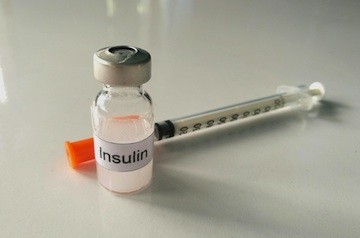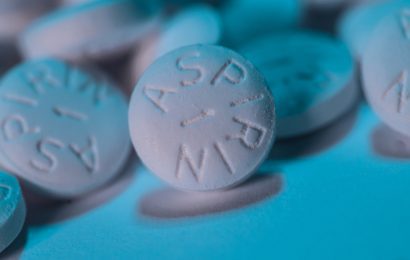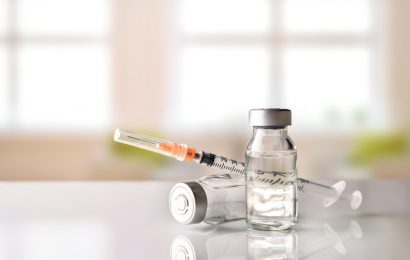To borrow a phrase from the late, great Rodney Dangerfield, “Basal insulin gets no respect.” Very few people know how to spell it correctly (basil? bazal? I mean, really!), and even fewer know what the heck it’s for. That’s a shame, because basal insulin (no “z”) is the foundation upon which insulin therapy is built.
Unlike its more famous little brother bolus, which is the rapid-acting insulin given to cover those delicious carbohydrates in our diet, basal’s job is much more mundane: to match the liver’s secretion of glucose into the bloodstream (and to prevent the liver from oversecreting glucose). Everyone’s liver does it, and a healthy pancreas responds by secreting a small amount of insulin into the bloodstream every few minutes.
How would we manage without basal insulin? Not so well. Because the liver is secreting glucose into the bloodstream continuously, a complete lack of insulin, even for just an hour or two, would result in a sharp rise in blood glucose level. Basal insulin also makes sure that the body’s cells are nourished with a steady supply of glucose to burn for energy. Without basal insulin, many of the body’s cells would starve for fuel. Some cells would resort to burning only fat for energy, and that leads to production of acidic waste products called ketones. The combination of dehydration (caused by high blood glucose) and heavy ketone production (from excessive fat metabolism) leads to a life-threatening condition known as diabetic ketoacidosis (DKA).
Suffice it to say that basal insulin is necessary for maintaining blood glucose control, not to mention survival. So where does one find basal insulin? How much is needed? And when should it be taken?
Basal options
Each person’s basal insulin requirement is unique. It’s affected by factors such as body size, activity level, stage of growth, hormone levels, and the amount (if any) of internal insulin production from one’s own pancreas.
During a person’s growth years (up to age 21), basal insulin requirements tend to be heightened throughout the night. This is due to the production of hormones (growth hormone and cortisol) that stimulate the liver to release extra glucose into the bloodstream. After the growth years, production of these hormones is reduced and limited primarily to the predawn hours. The dawn effect, or dawn phenomenon, as this is called, results in an increased secretion of glucose by the liver in the early morning. As a result, basal insulin requirements in most adults tend to peak during the early morning hours.
To match these requirements, basal insulin can be supplied in a variety of ways. Intermediate-acting insulin (NPH) taken once daily will usually provide basal insulin around the clock, albeit at much higher levels 4–8 hours after injection and at much lower levels 16–24 hours after injection. Insulin glargine (brand names Lantus and Basaglar) and insulin detemir (Levemir) offer a relatively peakless insulin presence for approximately 24 hours, although the insulin level may wane a few hours earlier in some people. Insulin pumps deliver basal insulin in the form of tiny pulses of rapid-acting insulin every few minutes throughout the day and night. With a pump, the basal insulin level can be adjusted and fine-tuned to closely match the liver’s ebb and flow in glucose secretion.
Basal option 1: NPH at bedtime. The advantage of this program is the peak that occurs during the predawn hours — for those who need it. The disadvantages include the unpredictability of the peak and the potential for a blood glucose rise in the daytime and evening as the insulin action falls to very low levels at these times.
Basal option 2: Glargine or detemir once daily at bedtime. The main advantage of this program is the relatively unwavering flow of basal insulin (a very slight peak may occur 6–10 hours after injection) and consistent absorption pattern that is unaffected by exercise and skin temperature. The disadvantages include the potential for blood glucose rises during the night (due to the lack of a predawn peak) and the potential for blood glucose drops in the afternoon and evening (if meals are delayed), if the basal insulin level exceeds the liver’s production of glucose. In some people, glargine begins to wear off in less than 24 hours, resulting in a blood glucose rise prior to the next injection.
Basal option 3: Insulin pump therapy. Pump therapy offers the greatest degree of flexibility in terms of matching basal insulin to the body’s needs. Because small pulses of rapid-acting insulin analogs — either lispro (Humalog), aspart (NovoLog), or glulisine (Apidra) — are used to deliver basal insulin, the “basal rate” can be adjusted hourly, if needed, to match the liver’s normal, 24-hour pattern. Pumps also permit temporary changes to basal insulin rates to accommodate short-term changes in basal insulin needs (for situations such as illness, high or low activity levels, stress, and menstrual cycles).
Click here for a graph showing the approximate level of basal insulin activity using various types of insulin programs.)
Perhaps the greatest drawback to pump therapy is the risk of ketoacidosis. Any mechanical problem resulting in stoppage of insulin delivery can cause a severe insulin deficiency and production of ketones in just a few hours.
Starting doses
Once you have selected a strategy for supplying basal insulin, the next step is to determine the proper dose. Ideally, this should be done in cooperation with a physician who is experienced at setting and adjusting insulin doses.
In most cases, the daily dose of basal insulin is not very different from the total daily dose of bolus insulin. The daily basal insulin requirement generally depends on a person’s body weight and sensitivity to insulin, which is affected greatly by physical activity and hormone levels. For those with Type 2 diabetes, the daily basal insulin requirement can vary considerably: Some people who still produce their own insulin may require only a few units daily, while people who are obese and highly insulin resistant may require hundreds of units daily.
For people who produce virtually no insulin on their own (including those with Type 1 diabetes), insulin requirements are somewhat more predictable. The chart “Typical Basal Requirements” provides typical ranges for daily basal insulin needs.
Fine-tuning basal insulin
In the absence of food and exercise, basal insulin should hold the blood glucose level fairly steady. That’s because, as mentioned earlier, the level of basal insulin should come as close as possible to matching the liver’s secretion of glucose throughout the day and night.
It is a good idea to fine-tune your basal insulin before settling on specific bolus doses to use at mealtimes. When high or low blood glucose appears, it is difficult to know what to adjust unless the proper basal insulin levels have already been established.
For people who take injections of NPH, glargine, or detemir, the goal is to set a dose that maintains a steady blood glucose level during sleeping hours and does not produce significant hypoglycemia or hyperglycemia during the day. Ideally, your blood glucose level should change no more than 30 mg/dl while you’re sleeping, assuming that no food is eaten and no heavy exercise is performed before going to sleep. A consistent rise or drop of more than 30 mg/dl overnight indicates a need to change your basal insulin dose.
To determine whether your overnight basal insulin dose is set correctly, try the following:
1. Have a fairly healthy dinner that does not contain a great deal of fat. Avoid restaurant or take-out food before this test. High-fat food will cause a prolonged blood glucose rise and will contaminate the test results. Take your usual doses of dinnertime and nighttime insulin.
2. If you normally exercise in the evening, go ahead and do so, but keep the intensity and duration modest. Very heavy exercise may cause blood glucose to drop several hours later, which would also contaminate the test.
3. At least three hours after dinner, perform a bedtime blood glucose check. As long as your blood glucose level is above 80 mg/dl and below 250 mg/dl, do not eat any food or take any rapid-acting insulin. If your blood glucose level is below 80 mg/dl, have a snack and try the test another night. If it’s above 250 mg/dl, give a correction dose of insulin and try again another night.
4. If your blood glucose level was above 80 mg/dl and below 250 mg/dl and you have decided to go ahead with the basal insulin test, check your blood glucose again in the middle of the night (or the middle of your sleep time) and again when you first wake up the next day. The middle-of-the-night reading is needed to rule out the Somogyi phenomenon, in which low blood glucose causes “rebound” high blood glucose.
If your blood glucose remains within 30 mg/dl from bedtime to wake-up time, your basal dose is probably OK. If it rises more than 30 mg/dl, increase your basal insulin dose by 10% and repeat the test. If it drops by more than 30 mg/dl, decrease your basal insulin by 10% and repeat the test. Continue adjusting and repeating the test until your blood glucose holds reasonably steady through the night.
For example, if your bedtime reading was 185 mg/dl and your wake-up reading was 122 mg/dl, your basal insulin dose is too high, because your blood glucose dropped by 63 mg/dl while you slept. Had your bedtime blood glucose level been closer to normal, you would have experienced hypoglycemia during the night. Reduce your basal insulin dose by 10%, and run the test again the following night. Had your blood glucose risen from 87 mg/dl to 160 mg/dl — a rise of 73 mg/dl — an increase in your basal insulin dose would be in order. If your bedtime reading was 95 mg/dl and you woke up at 87 mg/dl, your basal insulin dose would not need to be adjusted because your blood glucose level changed by only 8 mg/dl.
Fine-tuning pump basal rates
Appropriate basal rates must be established to obtain quality blood glucose control and enjoy the flexible lifestyle afforded by an insulin pump. Remember: The right basal rate is one that keeps your blood glucose at a fairly constant level when you have not eaten or taken a bolus dose for several hours and are not exercising.
To test your basal insulin settings, you will need to wait approximately four hours after your last bolus and meal or snack. This will give the carbohydrates in your food time to finish digesting and the bolus dose time to finish working. The meal (or snack) eaten before the test should be fairly low in fat (no restaurant or take-out food) so that you don’t have a delayed blood glucose rise. You must stay connected to the pump continuously during the test and go about your normal, daily activities. However, heavy exercise should be avoided during the fasting phase of the test. Testing should not be performed during an illness or onset of menses, following hypoglycemia, or if your blood glucose level is greater than 250 mg/dl at the beginning of the test. (See “Insulin Pump Basal Rate Testing Schedule.”)
Here’s what to do:
-
- Check your blood glucose level about four hours after your last bolus of lispro, aspart, or glulisine.
-
- If your blood glucose is above 250 mg/dl, bolus for the high blood glucose and cancel the test.
-
- If your blood glucose is below 80 mg/dl, eat to bring your blood glucose level up, and cancel the test.
- If your blood glucose level is neither too high nor too low, proceed with the test.
I prefer to test and fine-tune the nighttime basal rates first. Once the overnight rate is set properly, move on to the morning segment, then the afternoon, and finally, the evening segment.
Basal testing should be set up around the framework of your usual mealtimes and sleep patterns. The schedule above can be used as a guide for performing a complete set of basal tests.
If your blood glucose drops by more than 30 mg/dl during the test period, the basal rate is probably too high. If it rises by more than 30 mg/dl, the rate may be too low. The basal rate should be changed in increments of 0.05 to 0.2 units per hour, depending on your usual settings and the magnitude of the rise or drop that took place. The next day, retest to see whether the adjustment produces a steadier blood glucose level. Continue to adjust and retest until steady blood glucose levels are attained.
Note: Basal rates are usually changed one hour prior to an observed rise or fall in the blood glucose, since the rapid-acting insulin infused by the pump takes about an hour to peak. For example, if your blood glucose rises between 3 AM and 7 AM, you would increase the basal rate between 2 AM and 6 AM.
The Somogyi phenomenon
What about those pain-in-the-neck blood glucose readings you took during the night? Nobody likes getting up in the middle of the night to prick their finger, so those extra tests had better be worth it! Believe me, they are.
In many people, blood glucose can drop during the night to levels below 70 mg/dl without the person knowing it. The drop causes the body to secrete hormones that raise the blood glucose level by morning. This occurrence, known in the medical community as the Somogyi phenomenon (after its discoverer), can interfere with basal dosing decisions if it goes undetected.
As shown on the graph “Overnight Blood Glucose Patterns,” Larry, Moe, and Curly all started and finished the night with the same blood glucose levels, indicating a rise during the night. Without knowing their blood glucose level in the middle of the night, our first instinct would be to increase the basal insulin for all three. But that wouldn’t solve the problem for all three.
Larry, as it turns out, is experiencing a steady rise throughout the night. An increase in his basal insulin is in order.
Moe also experienced a rise, but primarily during the pre-dawn hours. Adding a few units of intermediate-acting insulin (NPH) at bedtime would provide some extra insulin during these particular hours, and would likely work best for Moe.
Curly, on the other hand, experienced the Somogyi phenomenon. He dropped low in the middle of the night and rebounded to a higher level by morning. Increasing his basal insulin would make the problem worse, not better. A reduction in his basal dose by 10%, or possibly adding a bedtime snack, would make the most sense.
Giving basal a little respect
Having the right basal insulin program and setting the right doses is important for anyone who uses insulin. Taking too much basal insulin, or taking it at the wrong times, can result in frequent (and perhaps severe) hypoglycemia, not to mention weight gain. Taking too little basal insulin will produce high blood glucose and make it very difficult to set appropriate mealtime bolus doses. However, a properly set basal insulin level will allow you a great deal of flexibility in your schedule and should allow you to go to sleep confident about where you’ll be when you wake up.
Fine-tuning basal insulin can be complex, so don’t hesitate to ask a member of your health-care team for help with this task. An endocrinologist, certified diabetes educator, nurse practitioner, or insulin pump specialist can usually help you put your basal insulin on the right track.





